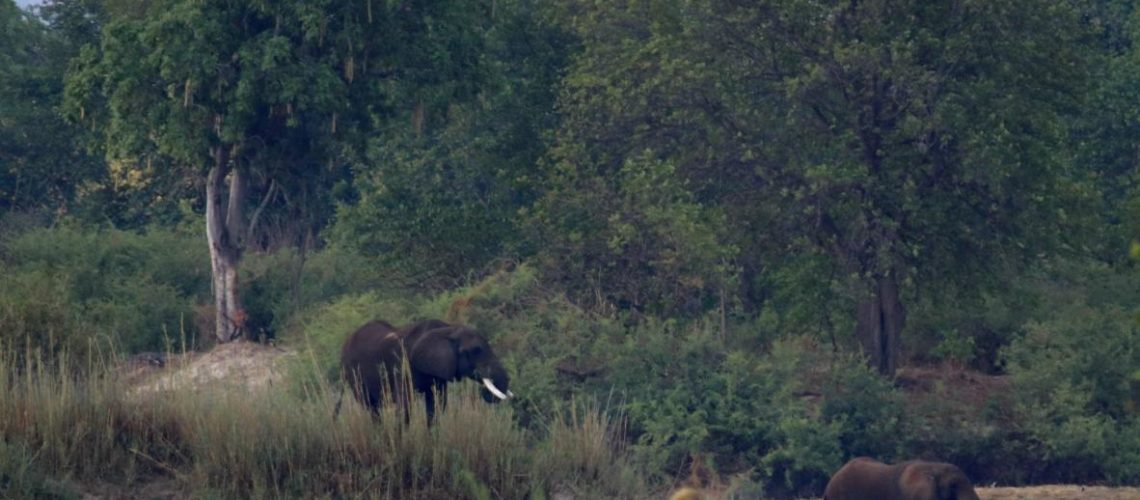Guest Post by Laura Rosen, a 2017-2018 Sustainability Leadership Fellow and Ph.D. Candidate in the Graduate Degree Program in Ecology and Department of Clinical Sciences
“Jane” is 31, a mother of two working in international tourism, and weighs 6,000 pounds. Jane (name changed to protect her identity) is an African elephant, one of about 60 elephants working at ecotourism facilities in the Victoria Falls area of Zimbabwe and Zambia. These elephants live moments away from one of the seven natural wonders of the world, surrounded by a diversity of wildlife. But all is not perfect here, and one of the less visible problems that poses a threat is that of infectious diseases. Tuberculosis (TB) is still a major problem in humans in this part of the world, and can spread to animals as well.
We often think of zoonotic diseases as those we can get from animals, such as avian influenza, rabies, or Lyme disease. Animals can also get diseases from us – as with elephants and TB. Elephants have probably been getting TB from humans for at least 2000 years, and it has been diagnosed more frequently in the last 20 years in elephants cared for by humans. Elephants can also transmit TB back to humans and to other elephants. Given how common human TB is here, Jane and other elephants around the Victoria Falls area were tested to look for antibodies to the bacteria that cause TB. This collaborative project between researchers in the US and South Africa, and local veterinarians and conservationists in Zimbabwe was the first study looking at TB in working elephants in Africa.
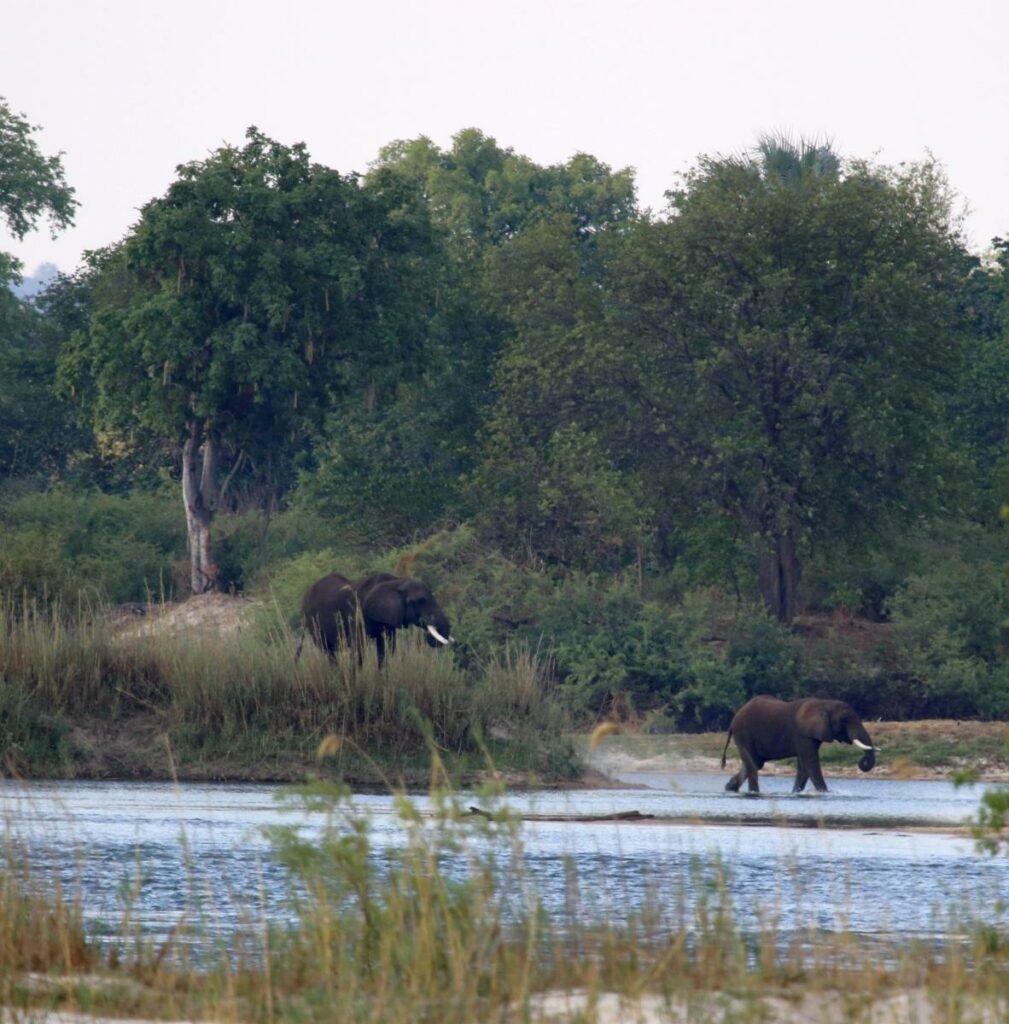
While TB might be thought of as a disease from a bygone era in the United States, it has not been forgotten elsewhere in the world. One in four people in the world is infected with bacteria that cause TB. Most will never develop TB, which typically affects the lungs, and can cause general symptoms like cough and weight loss. Even so, every year more than 10 million new TB cases are diagnosed, and more than 1.5 million people die of the disease. Millions of dollars are spent around the world every year on efforts to test for, treat, and prevent TB. Domestic animals like cattle also get TB, and in some cases, people can get sick if they have extended close contact with an infected animal or consume products like milk from an infected animal. TB affects species around the world, including wildlife such as rhinos, primates, and elephants like Jane.
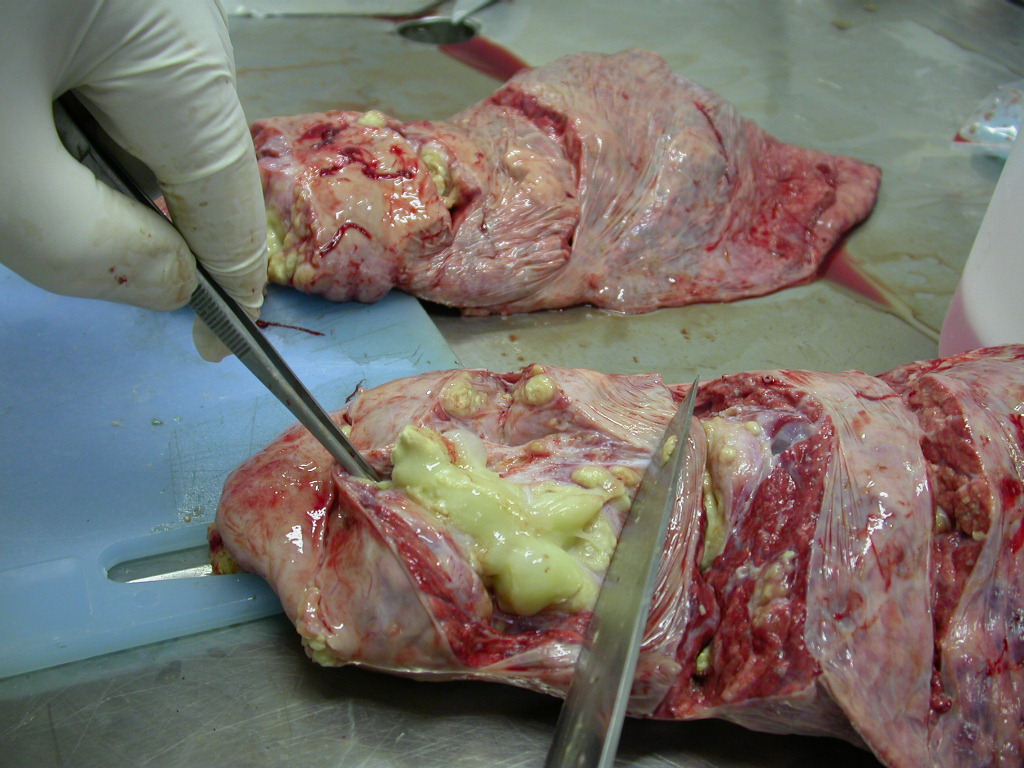
We found that several elephants tested positive for TB antibodies. Antibodies are produced by the immune system when it encounters something foreign, like bacteria, and remain in the blood to allow for a quick response should that bacteria be encountered again. When antibodies to a specific pathogen are present, they indicate that the animal has been exposed to the bacteria at some point, but don’t tell us whether an animal is currently infected. These results do suggest that we should be monitoring animals in this area for TB and trying to minimize the spread of diseases like TB among humans, livestock, and wildlife.
TB can spread from working elephants to wild elephants when these elephants use the same areas and when people encourage mating of captive females and wild males. The spread of TB to wild elephants is a major concern, because TB is very difficult to eradicate in wild populations. Within the last 5 years, there have been reports of TB in wild elephants in Africa and Asia. Elephant populations are declining, so it’s vital to focus on their conservation to ensure that these iconic species remain a part of the landscape for generations to come.
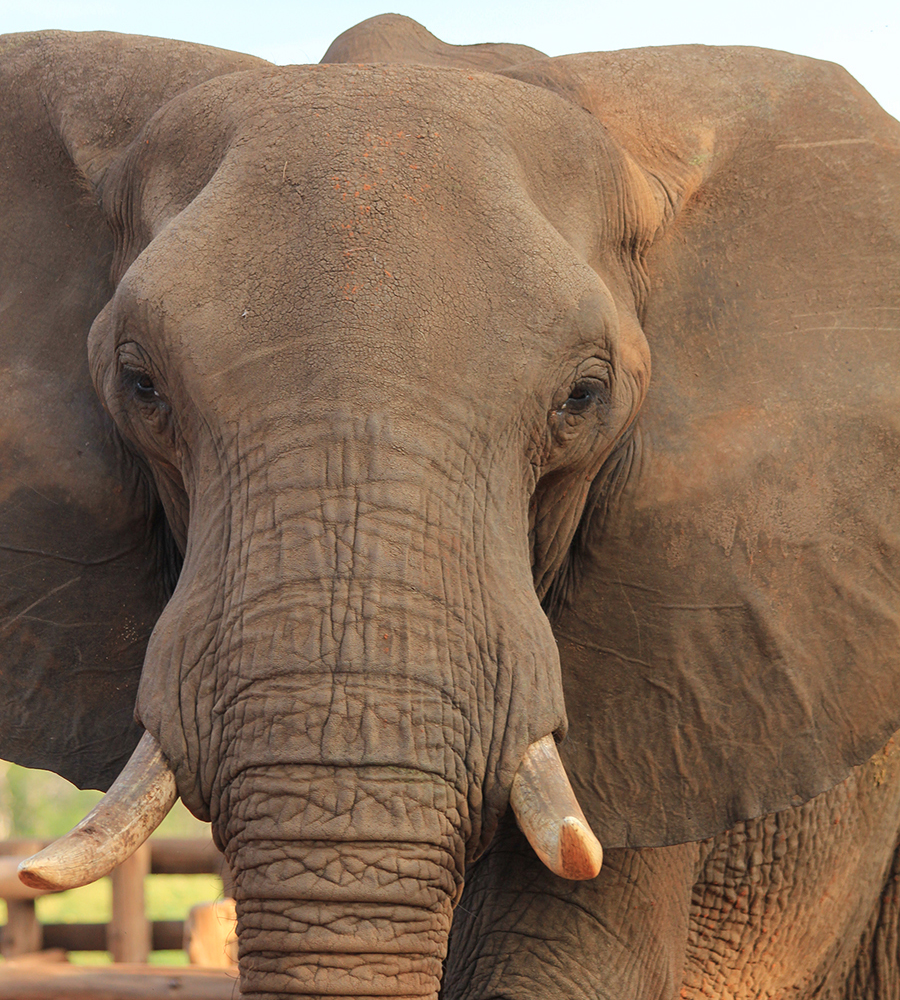
Finding TB in wild elephants where Jane and the rest of her herd live would be alarming, because this area is home to Africa’s largest connected populations of elephants. Victoria Falls is at the center of the Kavango-Zambezi Transfrontier Conservation Area, which incorporates land from Angola, Botswana, Namibia, Zambia, and Zimbabwe into a region about the size of Colorado and Wyoming combined. As the name suggests, transfrontier conservation areas are designed to promote conservation and sustainable management of the rich natural resources of these areas, and benefit economic development of local communities through tourism. They combine large tracts of public, private, and communal lands across the borders of multiple countries in southern Africa. Historically, people built fences throughout this landscape to separate livestock and wildlife, but these fences disrupted migration paths for wildlife. Connecting land within a conservation area involves removing fences and joining fragmented habitat to allow wildlife to move freely. While unrestricted wildlife movement can benefit conservation, it can also increase disease transfer among wildlife, livestock, and people.
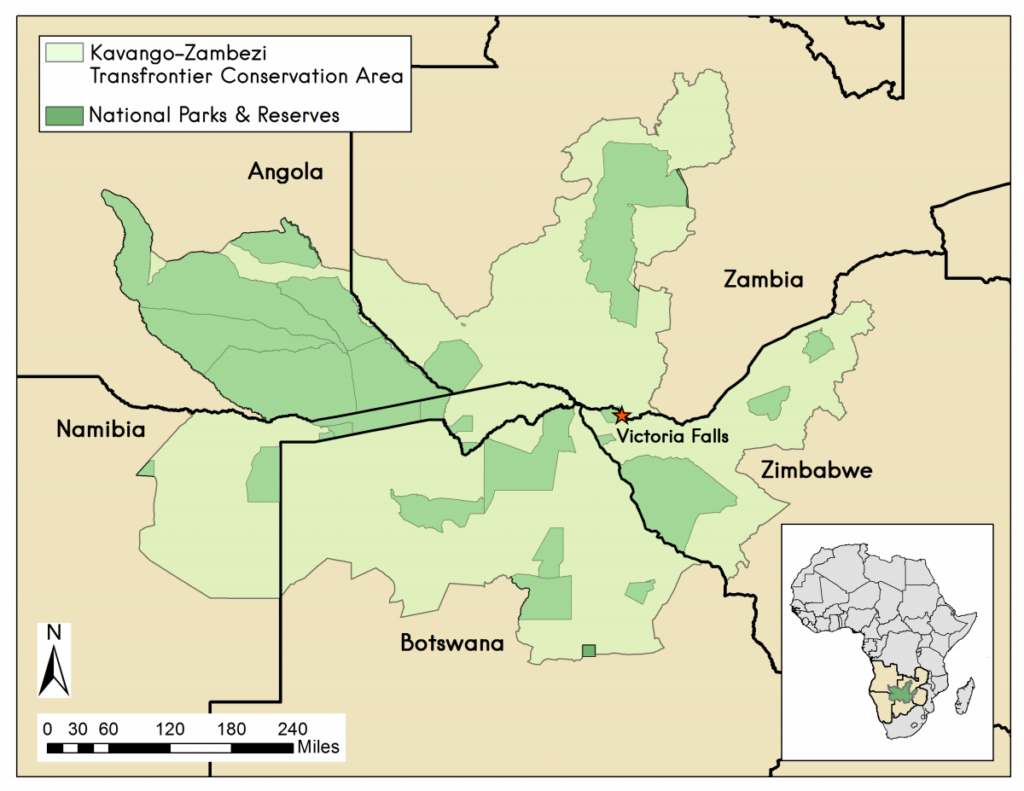
Southern Africa is home to many diseases of economic or public health significance, including TB, which must be considered in the management of these areas. Take an example from another transfrontier conservation area, which includes South Africa’s famed Kruger National Park. In the 1990s, African buffalo in the park began getting sick with bovine TB, a disease that came from cattle outside the park. The disease spread through the park, not just in buffalo but in other species like kudu and warthog. Carnivores like lions prey on the buffalo weakened by TB and then become infected themselves. Now TB appears to have spread across the Zimbabwean border to buffalo in Gonarezhou National Park. This real-life scenario serves as a warning for the potential for disease spread within a transfrontier conservation area.
Avoiding a similar outcome in Kavango-Zambezi is an opportunity to implement the One Health Initiative, which emphasizes the connections between human, animal, and environmental health. Preventing and managing TB in people and animals requires coordinated efforts in among multiple species. Routinely testing the elephants and their handlers for TB is important to recognize whether TB is present. Keeping the elephants away from livestock and wildlife minimizes the risk of disease transmission. Testing livestock and, when possible, wildlife as part of regular TB surveillance will allow for a more complete understanding of how much TB is present, and where. Keeping people and animals like Jane healthy means a healthier planet for all species, and a chance for successful conservation in places like Kavango-Zambezi.
See more from Laura at lerdvm.com or follow @LERDVM on Twitter
